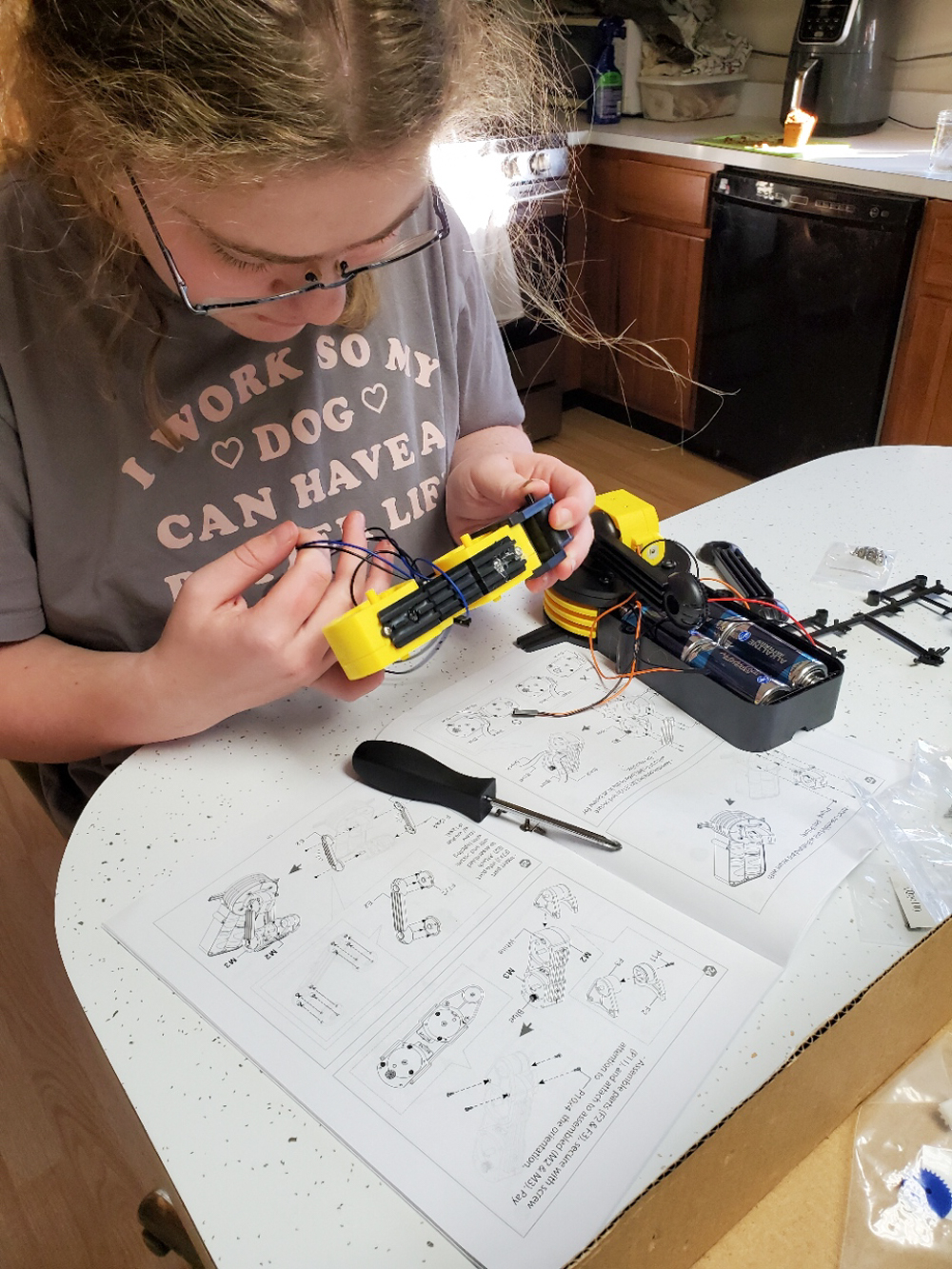 |
| Quick Pick Six Elements with my ten-year-old. I miss those long-ago days of literally homeschooling around our big family room table! |
You won't be surprised, then, to learn that I've amassed a lot of resources relating to the Periodic Table of the Elements. Here are some that we've used over the years:
.jpg) |
| We have worked this PTOE puzzle SO many times! |
- Quick Pick Six Elements. I printed the playing cards on card stock and the kids colored them; I don't usually put that much effort into a handmade material, but we have used the snot out of this game! There are some other element flash cards that are already colored in available here.
- Interactive Periodic Table of the Elements. Click on one of the elements, and you can see images and descriptions. It's probably better for younger kids. This interactive Periodic Table of the Elements is better for older students.
- Periodic Table of Mistakes. After your kids have learned how the Periodic Table is organized, present them with this and see if they can spot all of the mistakes!
- PTOE Cookies. You know how we love baking delicious things for school! I really want to make cookies or cupcakes of the entire Periodic Table.
- Element Collection. How large of a collection can you accrue? I also think it would be fun to organize this as a scavenger hunt--how many elements do you already own?
- Lewis Dot Diagram of the Elements. Try this one instead of your standard Periodic Table.
- Build a Periodic Table of the Elements. Here's a big project for the semester--build your own wall-sized Periodic Table! If you don't need as much hand-holding, here's a free download that shows you how to set up this assignment.
- Egg Carton Periodic Table. Make your own Periodic Table of the Elements out of egg cartons.
- Periodic Table of Videos. TED-Ed has a lesson for every element in the Periodic Table.
- Cartoon Elements. Need your elements anthropomorphized? Here you go!
- PTOE Battleship. Here's a great way to get kids comfortable with pronouncing (or trying to pronounce!) the names of the elements.
- Periodic Table of the Elements Lapbook. My kids never got into lapbooks, although I do sometimes have them complete some of the smaller elements to include in the notebooks that they do keep.
- Chemical Element Trump Cards. Here's another card game, this one available as a free download.
- Element Coloring Pages. You can only get a few of the pages for free, but if your kiddo enjoys them, you could buy the book!
- Montessori Three-Part Cards of the Elements. A Montessori kid would adore these.
- Blank Table. Why not just write in your own?
- Cross-stitch Elements. This probably isn't for the kids, but I now deeply desire to make an entire cross-stitch Periodic Table of the Elements. Or maybe Perler beads?
- Cheater quilt. You can print the table, itself, onto quilting cotton via Spoonflower, and then sew it yourself, or use it as a beginner sewing project to do with the kids. Kids love hand-quilting! This one, on the other hand, is more of a patchwork sewing project, but you lose the element info.
- Poster. We have always LOVED our large-format anchor charts over here. The bigger they are, the more room the kids have to draw and glue things all over them!
And here are our FAVORITE favorite resources--THE BOOKS!!!!!!!!!
.jpg)
.jpg)
.jpg)
.jpg)
.jpg)
.jpg)
















.jpg)
.jpg)
.jpg)
.jpg)
.jpg)
.jpg)
.jpg)
.jpg)
.jpg)
.jpg)
.jpg)
.jpg)
.jpg)
.jpg)
.jpg)
.jpg)
.jpg)
.jpg)
.jpg)
.jpg)
.jpg)
.jpg)
.jpg)
.jpg)
.jpg)
.jpg)
.jpg)
.jpg)
.jpg)